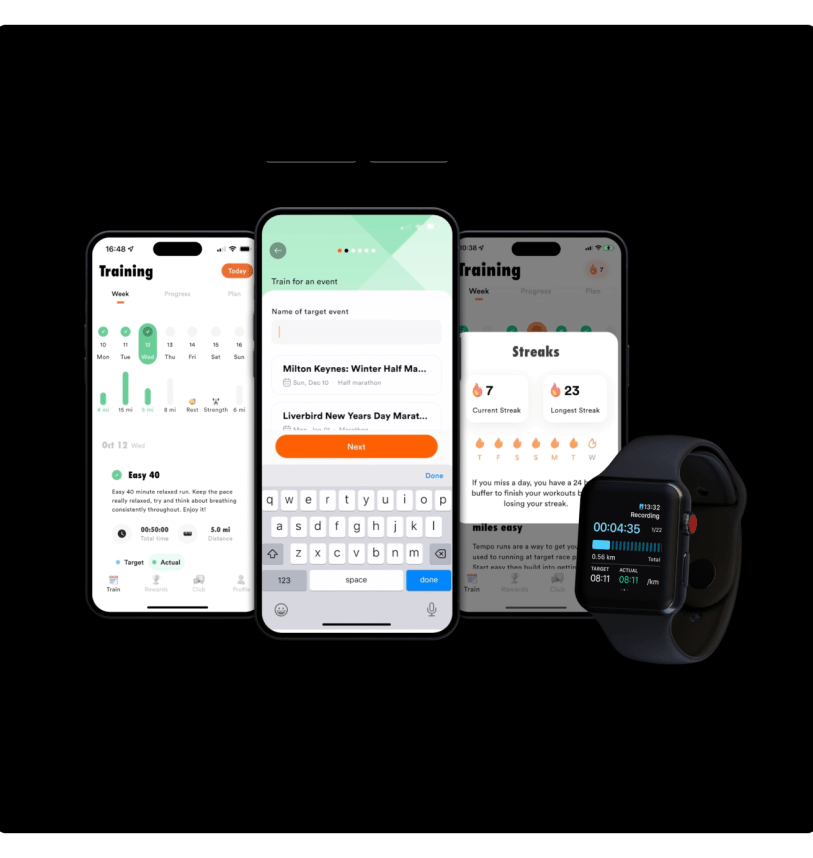
You’ve spotted ‘easy runs’ in your Training Plan, but what are they and why are they integral to your training?
The good news is the majority of your marathon training should be running easy. So, here to give you the lowdown on how to master these sessions is Gil McClure - running coach and co-founder of Sole Clinic, a Bournemouth-based social run club.
Have you ever thought about how a run should feel? Forget clocking up miles, PBs, and the number of runs you have planned for the week and, for just a moment, tune into the feeling.
At times, running can be unforgiving, and running at an easy pace one day can feel harder than the next. That's why I focus on feeling, not pace, when running easy. If you can tune into how you feel while you run, it makes trusting the process of training and Event Day more enjoyable, and you begin to understand what you need more clearly.
Concentrate on effort over pace for these runs
Create an effort scale of one to 10 - 10 being an all-out sprint, which you’ll only be able to maintain for around eight to 10 seconds. I like to refer to one to four on the scale as ‘conversational pace’, where you can maintain a running effort that allows you to chat to someone running with you as you go. Even if you aren’t a chatter, and you like to be in your own headspace, imagine running at a comfortable effort that would allow you to breathe and string a couple of sentences together.
To do this your breathing needs to be steady and controlled, which in itself is often a challenge for most, especially when starting out. But it’s also important for preparation. It’s vital to warm up and prepare our mind and body for a training run or an event, which is why applying a mindset of effort rather than pace can really help.
I like to think about easy runs as low effort, slow pace. This can be applied to all kinds of sessions, including easy long runs, warm-ups or rest periods during harder interval work, and recovery runs.
The good news is… most of your training should be running easy!
You may have heard of the 80/20 rule. 80% of your training consists of easy-effort runs, and 20% higher effort. Well, unless you’re a full-time professional athlete, you can ignore this rule.
Most of us are juggling training with many other responsibilities, so our physical focus and mindset isn’t on training alone, and we don’t have full-time physios and coaches. Therefore, a rule of 70/20/10 is more appropriate, where 70% of our training is easy, 10% is at the higher effort (intervals or high-tempo training), and 20% is somewhere in the middle, often referred to as ‘steady runs’.
You may have a pace bracket during certain sessions, but try applying an effort scale to help you tune into how you’re feeling.
Do
Think more about your effort level than your pace
Listen to and tune into your body. Feel your way through the run
Think about low and slow runs
Make sure you have slow recovery runs in your plan
Always prepare for harder runs with slow warm-ups
Don’t
Only focus on your pace or speed
Just do what everyone else is doing
Assume the 80/20 rule works for you
Underestimate the power and benefits of running easy
Give your body the chance to repair and strengthen
Don't underestimate easy runs. A high proportion of running injuries are due to overtraining and overloading the body. Running easy not only gives you a break from the high-impact training but also promotes blood flow and the stitching together of muscle fibres, which is a vital part of physical development and resilience.
Running at a lower effort and slower pace is also ideal for returning to training and rebuilding your fitness after injury. Our bodies are brilliant at storing muscle memory, and often the road to recovery can be quicker than we think, but only if we load our bodies in the right way and don’t overdo it.
The priority when returning to running should always be the enjoyment of moving, and appreciating our body’s ability to run, even slowly. It may feel like you’re starting from scratch but, if you’re patient and focus on running easy for the first two or three months after an injury, you’re much more likely to increase your effort sooner without further issues.
Want a personalised Training Plan?
